
The historical dictionaries present essential information on a broad range of subjects, including American and world history, art, business, cities, countries, cultures, customs, film, global conflicts, international relations, literature, music, philosophy, religion, sports, and theater. Written by experts, all contain highly informative introductory essays on the topic and detailed chronologies that, in some cases, cover vast historical time periods but still manage to heavily feature more recent events.
Brief AZ entries describe the main people, events, politics, social issues, institutions, and policies that make the topic unique, and entries are cross-referenced for ease of browsing. Extensive bibliographies are divided into several general subject areas, providing excellent access points for students, researchers, and anyone wanting to know more. Additionally, maps, photographs, and appendixes of supplemental information aid high school and college students doing term papers or introductory research projects. In short, the historical dictionaries are the perfect starting point for anyone looking to research in these fields.
Historical Dictionaries of Asia, Oceania, and the Middle East
Jon Woronoff, Series Editor
Guam and Micronesia , by William Wuerch and Dirk Ballendorf. 1994.
Palestine , by Nafez Y. Nazzal and Laila A. Nazzal. 1997.
Lebanon , by Asad AbuKhalil. 1998.
Azerbaijan , by Tadeusz Swietochowski and Brian C. Collins. 1999.
Papua New Guinea , Second Edition , by Ann Turner. 2001.
Cambodia , by Justin Corfield and Laura Summers. 2003.
Saudi Arabia , Second Edition , by J. E. Peterson. 2003.
Kyrgyzstan , by Rafis Abazov. 2004.
Turkmenistan , by Rafis Abazov. 2005.
Vietnam , Third Edition , by Bruce Lockhart and William J. Duiker. 2006.
India , Second Edition , by Surjit Mansingh. 2006.
Hong Kong SAR and the Macao SAR , by Ming K. Chan and Shiu-hing Lo. 2006.
Pakistan , Third Edition , by Shahid Javed Burki. 2006.
Iran , Second Edition , by John H. Lorentz. 2007.
Gulf Arab States , Second Edition , by Malcolm C. Peck. 2008.
Laos , Third Edition , by Martin Stuart-Fox. 2008.
Brunei Darussalam , Second Edition , by Jatswan S. Sidhu. 2010.
Malaysia , by Ooi Keat Gin. 2009.
Yemen , Second Edition , by Robert D. Burrowes. 2010.
Tajikistan , Second Edition , by Kamoludin Abdullaev and Shahram Akbarzadeh. 2010.
Bangladesh , Fourth Edition , by Syedur Rahman. 2010.
Polynesia , Third Edition , by Robert D. Craig. 2011.
Singapore , New Edition , by Justin Corfield. 2011.
East Timor , by Geoffrey C. Gunn. 2011.
Postwar Japan , by William D. Hoover. 2011.
Afghanistan , Fourth Edition , by Ludwig W. Adamec. 2012.
Philippines , Third Edition , by Artemio R. Guillermo. 2012.
Tibet , by John Powers and David Templeman. 2012.
Kazakhstan , by Didar Kassymova, Zhanat Kundakbayeva, and Ustina Markus. 2012.
Democratic Peoples Republic of Korea , by James E. Hoare. 2012.
Thailand , Third Edition , by Gerald W. Fry, Gayla S. Nieminen, and Harold E. Smith. 2013.
Iraq , Second Edition , by Beth K. Dougherty and Edmund A. Ghareeb. 2013.
Syria , Third Edition , by David Commins and David W. Lesch. 2014.
Science and Technology in Modern China by Lawrence R. Sullivan and Nancy Y. Liu. 2014.
Taiwan (Republic of China), Fourth Edition , by John F. Copper. 2014.
Australia , Fourth Edition , by Norman Abjorensen and James C. Docherty. 2015.
Republic of Korea , Third Edition , by James E. Hoare. 2015.
Indonesia , Third Edition , by Audrey Kahin. 2015.
Fiji , by Brij V. Lal. 2016.
Peoples Republic of China, Third Edition , by Lawrence R. Sullivan. 2016.
Israel , Third Edition , by Bernard Reich and David H. Goldberg. 2016.
New Zealand , Third Edition , by Janine Hayward and Richard Shaw. 2016.
Nepal, Second Edition, by Nanda R. Shrestha and Keshav Bhattarai. 2017.
Burma (Myanmar) , Second Edition, by Donald M. Seekins. 2017.
Mongolia , Fourth Edition , by Alan J. K. Sanders. 2017.
Historical Dictionary of Mongolia
Fourth Edition
Alan J. K. Sanders
ROWMAN & LITTLEFIELD
Lanham Boulder New York London
Published by Rowman & Littlefield
A wholly owned subsidiary of The Rowman & Littlefield Publishing Group, Inc.
4501 Forbes Boulevard, Suite 200, Lanham, Maryland 20706
www.rowman.com
Unit A, Whitacre Mews, 26-34 Stannary Street, London SE11 4AB
Copyright 2017 by Alan J. K. Sanders
All rights reserved. No part of this book may be reproduced in any form or by any electronic or mechanical means, including information storage and retrieval systems, without written permission from the publisher, except by a reviewer who may quote passages in a review.
British Library Cataloguing in Publication Information Available
Library of Congress Cataloging-in-Publication Data
Names: Sanders, Alan J. K., author.
Title: Historical dictionary of Mongolia / Alan J. K. Sanders.
Description: Fourth edition. | Lanham, MD : Rowman & Littlefield, [2017] | Series: Historical dictionaries of Asia, Oceania, and the Middle East | Includes bibliographical references.
Identifiers: LCCN 2017012654 (print) | LCCN 2017013013 (ebook) | ISBN 9781538102275 (electronic) | ISBN 9781538102268 (hardcover : alk. paper)
Subjects: LCSH: MongoliaHistoryDictionaries. | MongolsHistoryDictionaries.
Classification: LCC DS798.5 (ebook) | LCC DS798.5 .S36 2017 (print) | DDC 951.7/3003dc23
LC record available at https://lccn.loc.gov/2017012654
 The paper used in this publication meets the minimum requirements of American National Standard for Information SciencesPermanence of Paper for Printed Library Materials, ANSI/NISO Z39.48-1992.
The paper used in this publication meets the minimum requirements of American National Standard for Information SciencesPermanence of Paper for Printed Library Materials, ANSI/NISO Z39.48-1992.
Printed in the United States of America
For my wife Tiina
Contents
Editors Foreword
Mongolia still seems terribly remote to most of us. This is not just a matter of distance, for we hear much more about other faraway places. The problem is more a lack of knowledge than a lack of interest. The lack of interest is gradually decreasing now that Mongolia is truly independent and can strengthen its relations with other parts of the world. The lack of knowledge remains, although it too is decreasing thanks to books like the first, second, third, and now fourth edition of this historical dictionary, which inform us about the remarkable changes that have occurred over recent decades and also reveal some of the facts hidden in the past while correcting some of the errors arising out of the paucity of information and relative abundance of misinformation during the communist period.
This updated and expanded fourth edition of the Historical Dictionary of Mongolia focuses on the new Mongolia that is still emerging, providing entries on persons, institutions, places, and events that have become important over the past few decades within what is finally a truly independent state. It also reviews the communist period, including similar entries, and sometimes looks further back to periods when the Mongols controlled vast swaths of Asia and the Middle East (or were controlled by foreign powers). This often tumultuous history is traced in the chronology as well and put into context in the introduction. Helpfully, this book also considers the Mongols living beyond Mongolias borders. Again, to enable us to know present-day Mongolia better, appendixes supplement individual entries by listing the members of the national assembly and the management body of the biggest political party. The June 2016 parliamentary election resulted in a new government, numerous personnel changes across the country, and a rush of new legislation to revolutionize socioeconomic development and Mongolias historical legacy, without upsetting the fragile balance of relations with the countrys neighbors and investors. For those who want to find additional material, there is a comprehensive bibliography that includes much of the gradually increasing literature on Mongolia, past and present.
Next page
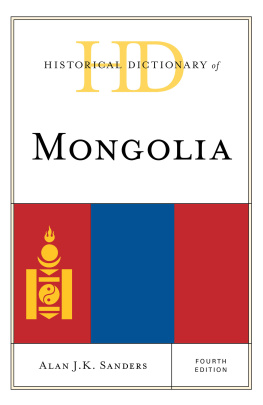
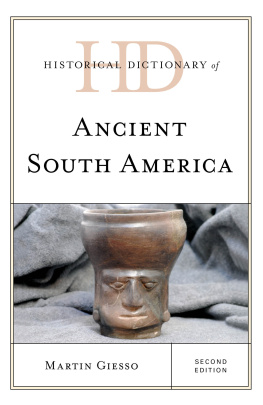
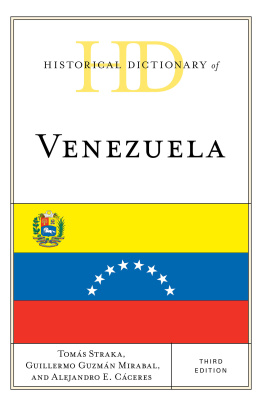
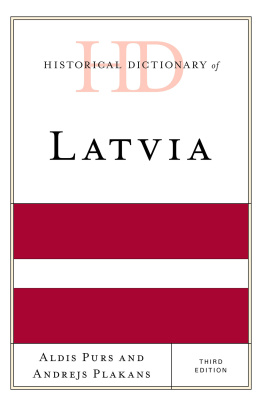
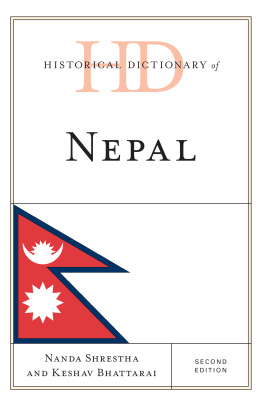
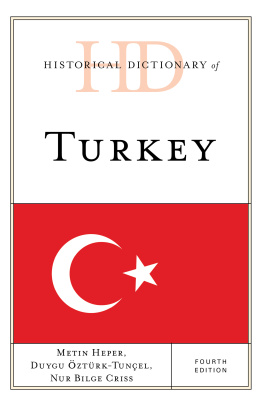



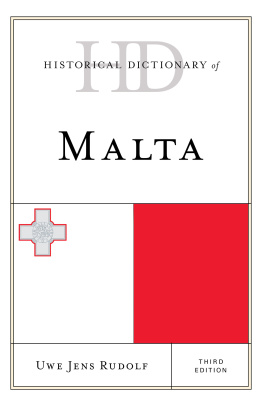
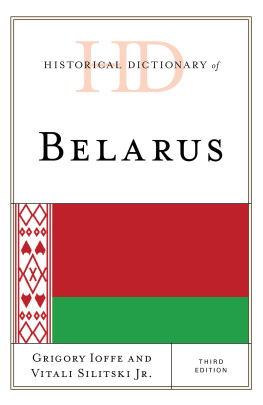
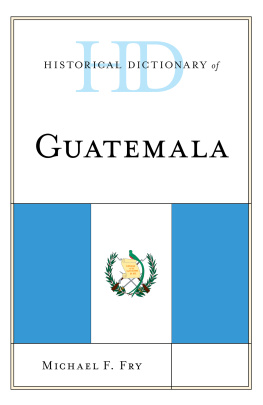


 The paper used in this publication meets the minimum requirements of American National Standard for Information SciencesPermanence of Paper for Printed Library Materials, ANSI/NISO Z39.48-1992.
The paper used in this publication meets the minimum requirements of American National Standard for Information SciencesPermanence of Paper for Printed Library Materials, ANSI/NISO Z39.48-1992.